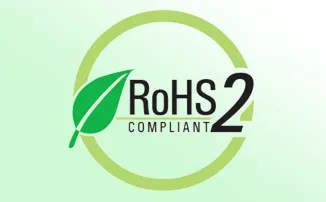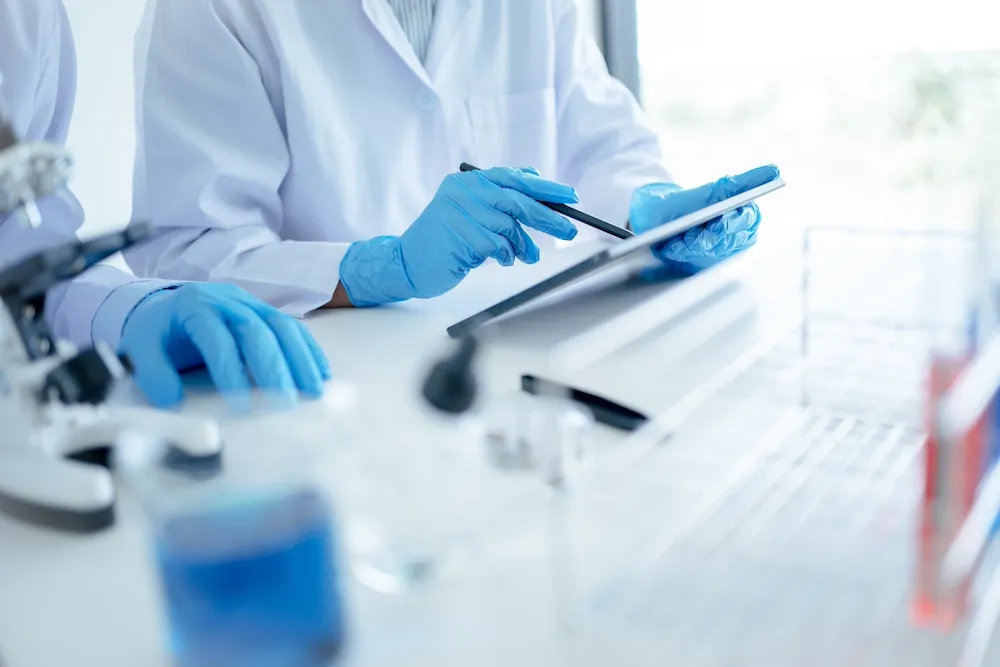
Delays are expected in the publication of the proposed revision of the European directive for RoHS (Restriction of the use of certain Hazardous Substances) in electrical and electronic equipment (EEE).
The European Commission was supposed to publish a proposal by the end of the year, but the review process seems to be taking longer than expected.
One of these reasons is related to the review of REACH and the legislative proposal for a regulation on ecodesign for durable products. These revisions are part of the Green Deal, and may complement the Restriction of Hazardous Substances Directive (RoHS).
For the REACH revision, the proposal is scheduled for the first quarter of 2023, which will postpone the RoHS revision proposal to the second quarter of 2023 and the negotiations until 2024. Thus, the RoHS 3 directive could be agreed by the end of 2024 and it could surely enter into force by 2027.
The changes that the revision of RoHS could bring
The German Öko-Institut, in charge of substance evaluation on behalf of the Commission, has recommended restrictions for TBBPA (brominated flame retardant tetrabromobisphenol-A) as an additive, and MCCP (medium chain chlorinated kerosenes). They are used in flame retardants in plastics.
It was expected that these substances would not be restricted before the adoption of the restriction. However, they could be included in the list of RoHS controlled substances before the adoption of the revision. This proposal could be implemented by amending the current directive through a delegated act.
Another change in the RoHS 3 directive could also take place. It could become a regulation or it could be repealed and its provisions incorporated into REACH.
Reminder on RoHS
Since July 1, 2006, the RoHS (Restriction of Hazardous Substances) directives regulate the use of certain substances in electrical and electronic equipment (EEE). The directive limits the use of certain hazardous substances in EEE. Thus, it imposes restrictions on companies wishing to place equipment within the scope of the directive on the European market. The French transposition puts the RoHS and WEEE (Waste Electrical and Electronic Equipment) directives in parallel in order to better regulate the dual challenge of protecting human health and the environment.
To find out if an equipment is RoHS compliant, you can check the product or its packaging for a RoHS logo.

The substances concerned
The RoHS 1 directive, modelled on the European directive 2011/65/EU, prohibits the placing on the European market of any electrical or electronic equipment that contains any of the six substances listed below:
- Lead (Pb) : <1000 ppm (i.e. 0.1%)
- Mercury (Hg) : <1000 ppm (or 0.1%)
- Cadmium (Cd) : <100 ppm (or 0.01%)
- Hexavalent chromium (Cr VI): <1000 ppm (i.e. 0.1%)
- Polybrominated biphenyls (PBB) : <1000 ppm (or 0.1%)
- Polybrominated diphenyl ethers (PBDE) : <1000 ppm (i.e. 0.1%)
The RoHS 2 directive adds 4 new substances to this list, with a concentration limit of 0.1%:
- Phtalate de bis(2-éthylhexyle) (DEHP)
- Phtalate de butyle et de benzyle (BBP)
- Phtalate de dibutyle (DBP)
- Phtalate de diisobutyle (DIBP)
In particular, the directive limits the use of these substances according to a certain concentration in electrical and electronic equipment, i.e. the percentage corresponding to the maximum tolerated concentration).
All these 10 substances concerned by the RoHS directive are available with more information on the ECHA website.
The different categories of products
There are 9 product categories in the RoHS Directive:
- Small and large home appliances
- Computers and telecommunications
- Standard consumer equipment
- Electrical and electronic tools
- Lighting equipment
- Toys, leisure and sports equipment
- Medical devices
- Control and monitoring instruments
- Vending machines
Use of substances covered by the directive
- Lead is used in the manufacture of batteries, televisions and monitors.
- Mercury is used in the manufacture of fluorescent lamps, aluminum galvanization, printed circuits, thermostats, steam lamps and fuel cells.
- Cadmium can be found in some plastics as a stabilizing agent, in batteries, brazing alloys, alarm systems, automatic sprinklers, in the production of pigments, etc.
- Hexavalent chromium is used in paints, plastics, photography and stainless steel products.
- The known use of Polybrominated Biphenyls (PBB) is in plastic foams, flame retardants or in some plastics used in household appliances.
- Finally, Polybrominated Diphenyl Ethers (PBDE) are used in household appliances.
How can EcoMundo help you?
The RoHS directive requires the traceability of hazardous substances contained in your articles. The SVHC Factory software allows you to outsource part or all of the regulatory data collection from your suppliers.
Delays are expected in the publication of the proposed revision of the European directive for RoHS (Restriction of the use of certain Hazardous Substances) in electrical and electronic equipment (EEE).
The European Commission was supposed to publish a proposal by the end of the year, but the review process seems to be taking longer than expected.
One of these reasons is related to the review of REACH and the legislative proposal for a regulation on ecodesign for durable products. These revisions are part of the Green Deal, and may complement the Restriction of Hazardous Substances Directive (RoHS).
For the REACH revision, the proposal is scheduled for the first quarter of 2023, which will postpone the RoHS revision proposal to the second quarter of 2023 and the negotiations until 2024. Thus, the RoHS 3 directive could be agreed by the end of 2024 and it could surely enter into force by 2027.
The changes that the revision of RoHS could bring
The German Öko-Institut, in charge of substance evaluation on behalf of the Commission, has recommended restrictions for TBBPA (brominated flame retardant tetrabromobisphenol-A) as an additive, and MCCP (medium chain chlorinated kerosenes). They are used in flame retardants in plastics.
It was expected that these substances would not be restricted before the adoption of the restriction. However, they could be included in the list of RoHS controlled substances before the adoption of the revision. This proposal could be implemented by amending the current directive through a delegated act.
Another change in the RoHS 3 directive could also take place. It could become a regulation or it could be repealed and its provisions incorporated into REACH.
Reminder on RoHS
Since July 1, 2006, the RoHS (Restriction of Hazardous Substances) directives regulate the use of certain substances in electrical and electronic equipment (EEE). The directive limits the use of certain hazardous substances in EEE. Thus, it imposes restrictions on companies wishing to place equipment within the scope of the directive on the European market. The French transposition puts the RoHS and WEEE (Waste Electrical and Electronic Equipment) directives in parallel in order to better regulate the dual challenge of protecting human health and the environment.
To find out if an equipment is RoHS compliant, you can check the product or its packaging for a RoHS logo.

The substances concerned
The RoHS 1 directive, modelled on the European directive 2011/65/EU, prohibits the placing on the European market of any electrical or electronic equipment that contains any of the six substances listed below:
- Lead (Pb) : <1000 ppm (i.e. 0.1%)
- Mercury (Hg) : <1000 ppm (or 0.1%)
- Cadmium (Cd) : <100 ppm (or 0.01%)
- Hexavalent chromium (Cr VI): <1000 ppm (i.e. 0.1%)
- Polybrominated biphenyls (PBB) : <1000 ppm (or 0.1%)
- Polybrominated diphenyl ethers (PBDE) : <1000 ppm (i.e. 0.1%)
The RoHS 2 directive adds 4 new substances to this list, with a concentration limit of 0.1%:
- Phtalate de bis(2-éthylhexyle) (DEHP)
- Phtalate de butyle et de benzyle (BBP)
- Phtalate de dibutyle (DBP)
- Phtalate de diisobutyle (DIBP)
In particular, the directive limits the use of these substances according to a certain concentration in electrical and electronic equipment, i.e. the percentage corresponding to the maximum tolerated concentration).
All these 10 substances concerned by the RoHS directive are available with more information on the ECHA website.
The different categories of products
There are 9 product categories in the RoHS Directive:
- Small and large home appliances
- Computers and telecommunications
- Standard consumer equipment
- Electrical and electronic tools
- Lighting equipment
- Toys, leisure and sports equipment
- Medical devices
- Control and monitoring instruments
- Vending machines
Use of substances covered by the directive
- Lead is used in the manufacture of batteries, televisions and monitors.
- Mercury is used in the manufacture of fluorescent lamps, aluminum galvanization, printed circuits, thermostats, steam lamps and fuel cells.
- Cadmium can be found in some plastics as a stabilizing agent, in batteries, brazing alloys, alarm systems, automatic sprinklers, in the production of pigments, etc.
- Hexavalent chromium is used in paints, plastics, photography and stainless steel products.
- The known use of Polybrominated Biphenyls (PBB) is in plastic foams, flame retardants or in some plastics used in household appliances.
- Finally, Polybrominated Diphenyl Ethers (PBDE) are used in household appliances.
How can EcoMundo help you?
The RoHS directive requires the traceability of hazardous substances contained in your articles. The SVHC Factory software allows you to outsource part or all of the regulatory data collection from your suppliers.







